
Tom Amos started out in 2000 as a low C player. He practiced diligently and developed excellent stroke mechanics. In 2003 he won the Virginia State Singles B Championship and the Virginia State Collegiate Championship. In 2004 he won the Virginia State Singles A Championship.
Here is a breakdown of his stroke. It is important to note that this is not a drop and hit. The ball is moving and Tom has to move as well as hit.
Forehand.

Note the ready position: elbow up about shoulder height, body facing the side wall. Note also the nice position of his left hand across his body.
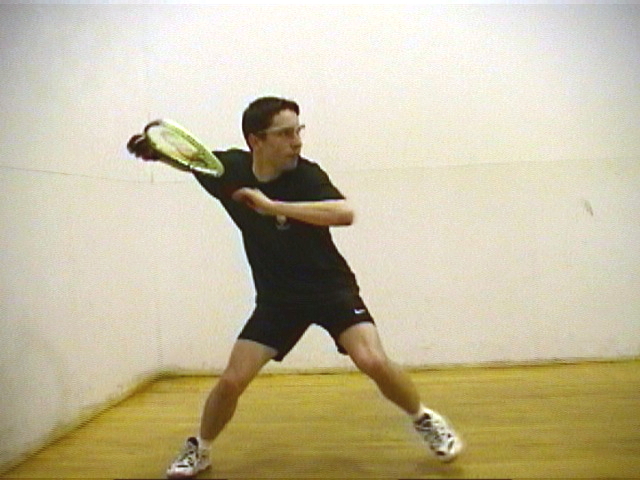
He is taking his step with his left foot. Note that his weight is mainly on his back leg.
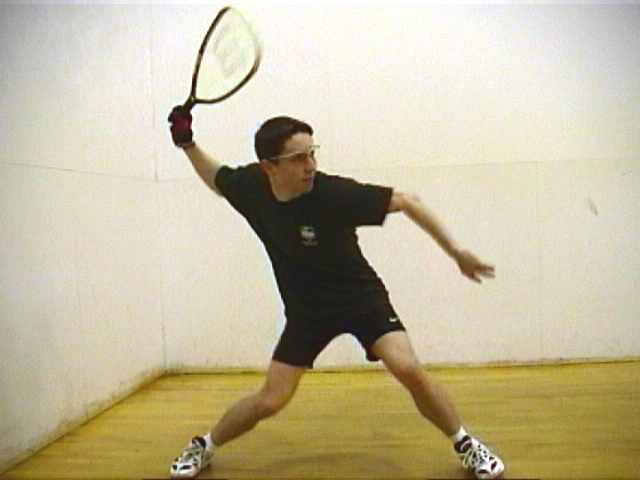
He has cocked his wrist and the racquet is way up.He is also "pushing his opponent out of the way" with his left arm, beginning his shoulder rotation.

Note the back foot "squishing the bug." Also, Tom is "leading with his elbow" in a nice compact stroke and is continuing his shoulder rotation.
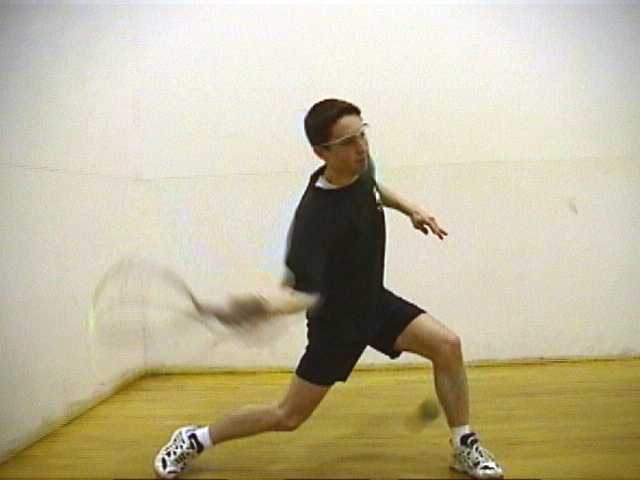
The butt of the racquet faces the front wall as Tom begins his wrist snap. Note how "flat" the swing is.
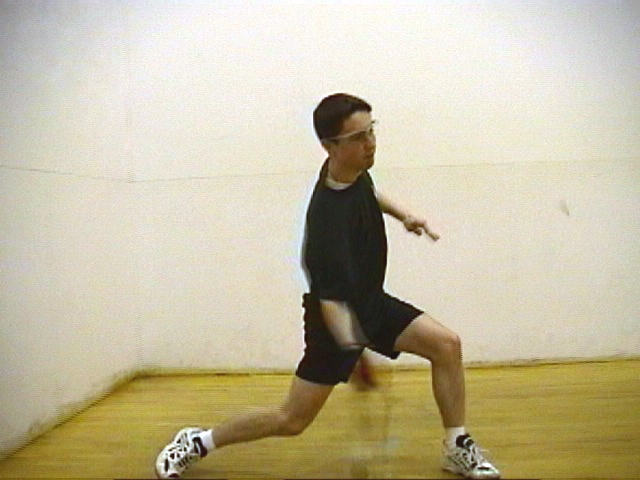
The ball is gone, but Tom hasn't moved his head. Also, the lower part of his back leg is parallel to the ground.
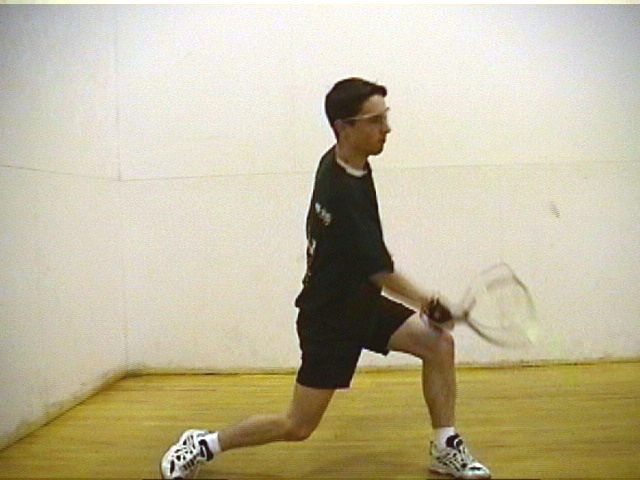
Tom is following through. Note that he is well balanced, with the majority of his weight on his back foot. And his head has barely moved. I am just sorry that his shoulder is not touching his chin.
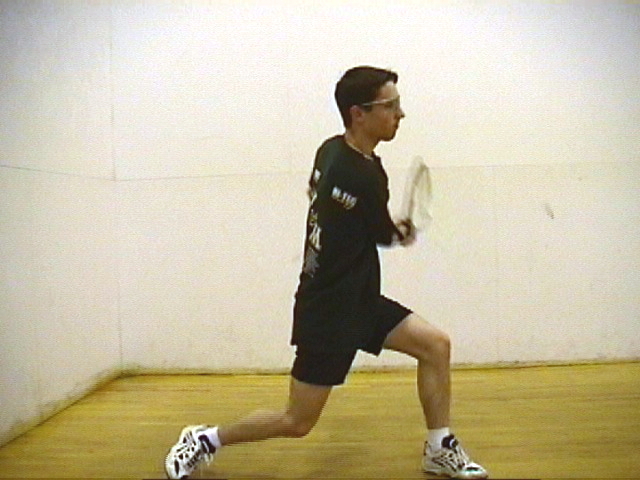
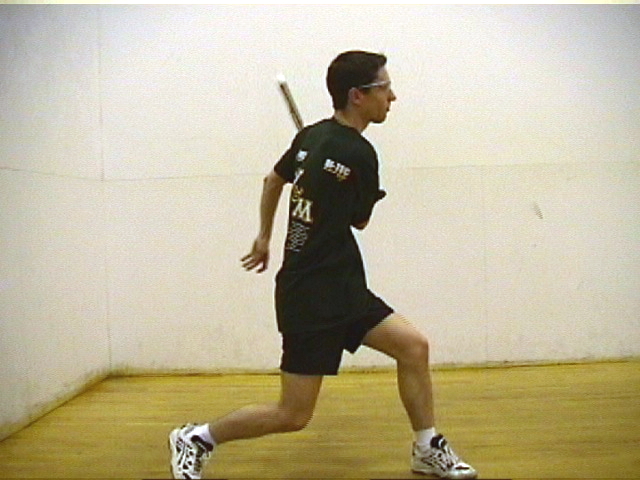
Good balance. Follow through below shoulder. Weight back.
Backhand.

Note the ready position. Racquet back, elbow at shoulder height, left hand up across body, body facing the side wall. Tom has already taken his step here. Note the closed stance.
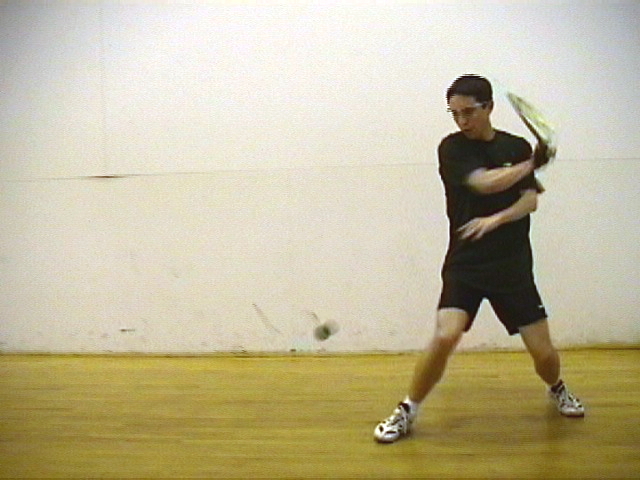
Tom has started his swing. Note that he has dropped his left arm.
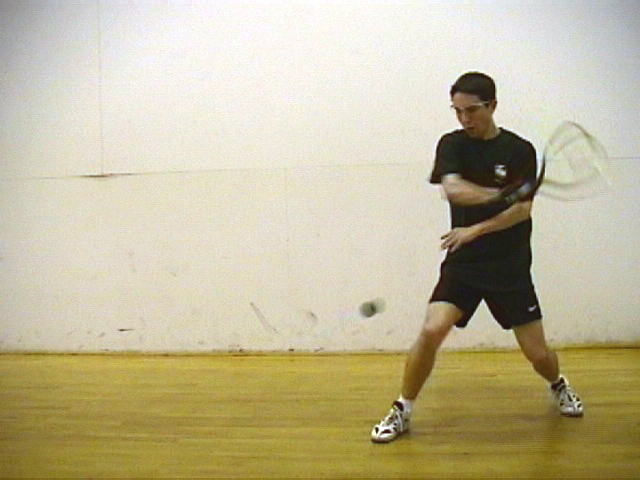
Note the rotation: hips, torso, shoulders. Note also that Tom is "squshing the bug" with his back foot and the butt of the racquet is facing the front wall.
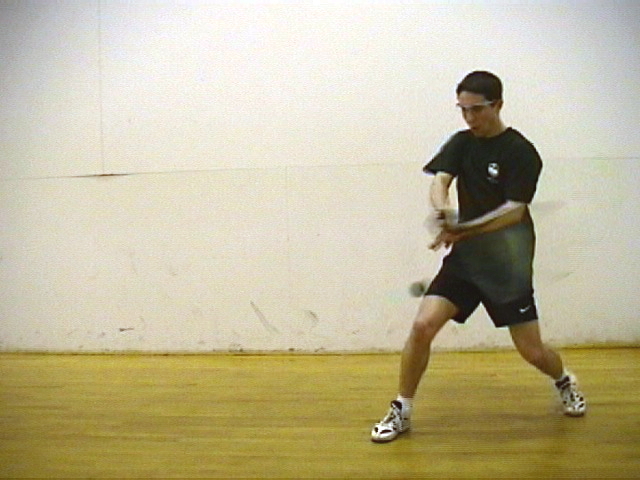
You can't see the racquet because Tom is snapping his wrist. He is well balanced, his weight is mainly on the back leg, and his back knee is bent. Note the "flat" stroke.
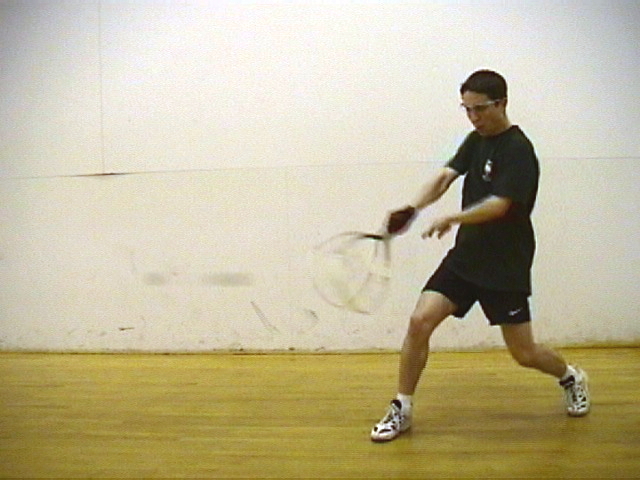
The ball is gone but Tom's head has not moved.
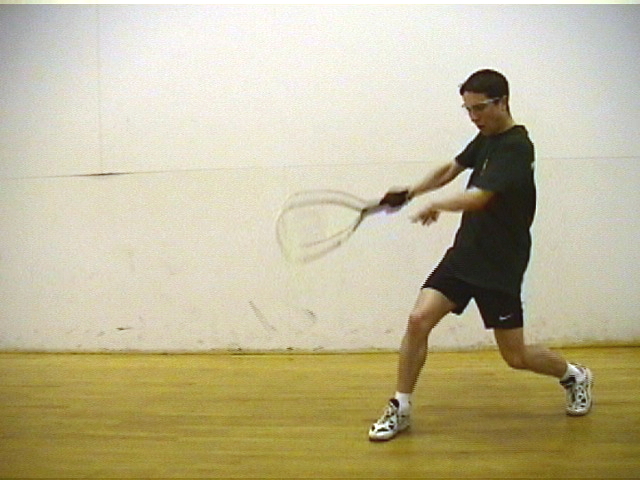
Tom is following through. Note that his weight is still mainly on his back leg.

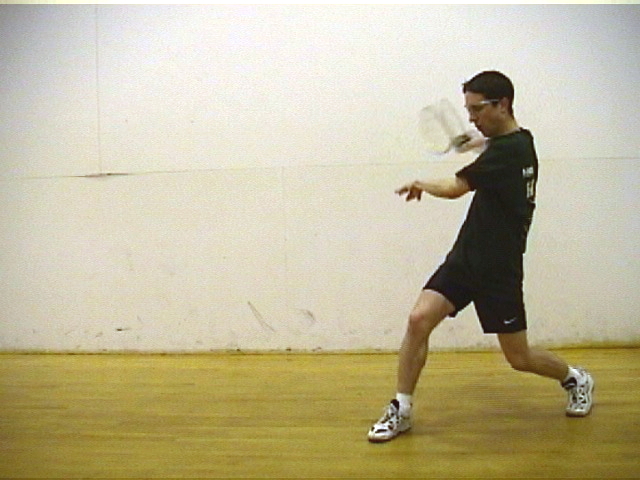
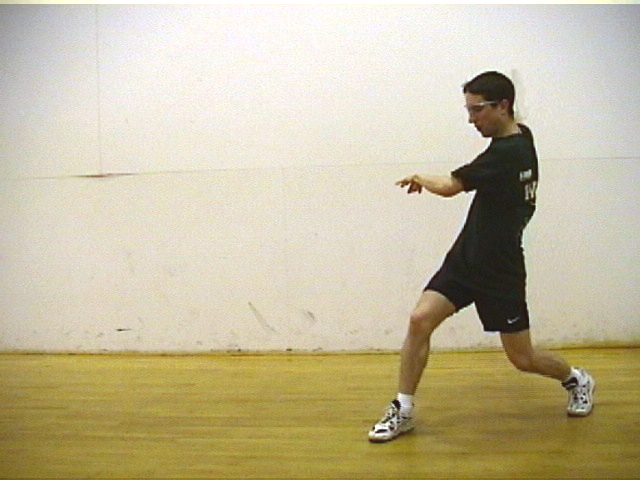
Continuing his follow through. Note that the follow through is
(almost)
below shoulder height.
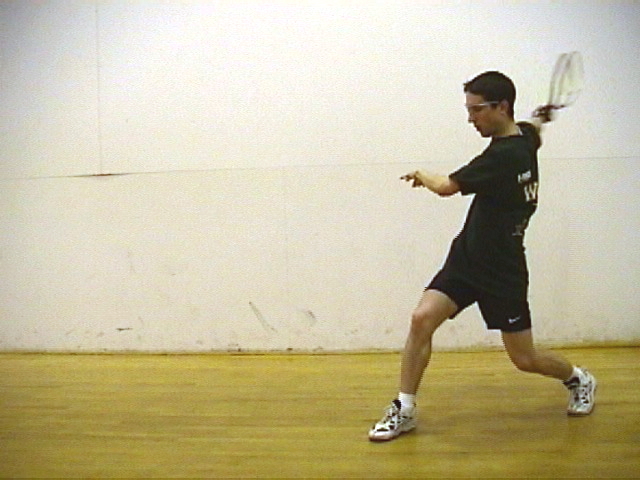
Again, note that most of his weight is still on his back foot. Also, note the big follow through.